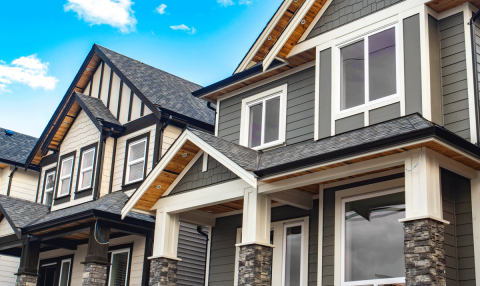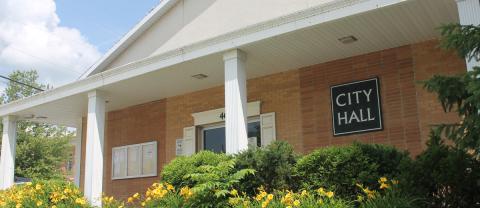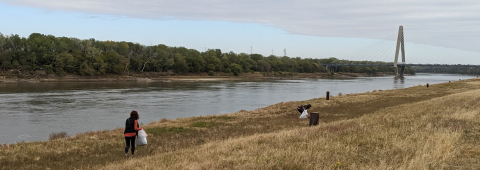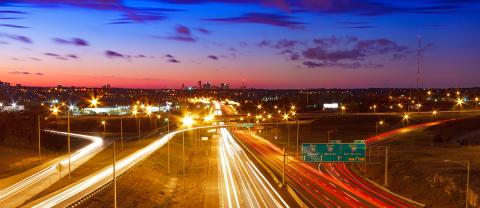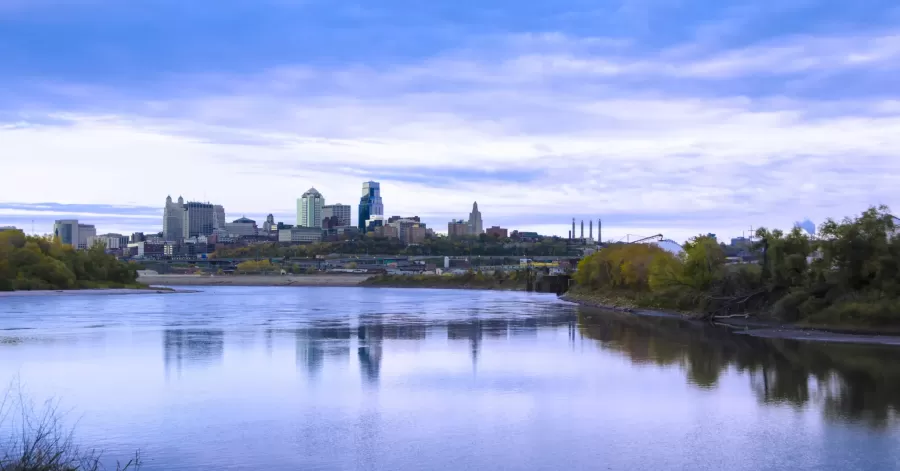Then
Greater Kansas City has a long history of working together to improve air quality.
In MARC’s very first decade, several counties in the region were not meeting the primary national air quality standard for ozone. Ozone is a harmful pollutant that, at ground level, has serious health impacts. An average reading in the late 1970s was above 150 parts per billion and — for comparison — readings are less than half that today.
Through an MOU signed by both governors in 1978, MARC was charged with important air quality responsibilities, such as creating and supporting the Air Quality Forum to serve as an advisory committee to the MARC Board and to lead bistate policy coordination for air quality issues.
As ozone concerns increased, a fuel summit in the mid-1990s led to an agreement between the business community and the oil refinery and pipeline sector to provide the region with a special blend of gasoline in the summertime. This lower-volatility fuel helped reduce ozone levels. This achievement was brokered by partners involved in the Air Quality Forum and was a significant step toward addressing ozone levels.
Our understanding of what drives ozone formation leapt forward in the early 2000s when a study identified oxides of nitrogen (NOx) as a major culprit. This finding led to prioritizing the reduction of NOx emissions at local power plants, which resulted in significant declines in ozone levels — with just one plant alone reducing the pollutant by 70 tons per day. This was one of the most consequential actions the region took to reduce ozone levels in the last 20 years.
The region’s Clean Air Action Plan was approved by the MARC Board in 2005 and continued the momentum by developing a systematic and comprehensive clean air strategy outside of a regulatory framework. This roadmap to cleaner air created a comprehensive, community-based voluntary strategy for reducing ozone pollution in the Kansas City metropolitan area. Subsequent updates to the plan in 2011 and 2018 emphasized sustainability strategies for the region, such as planting more trees and supporting public transportation, which built a natural bridge to climate action work.
Now
Today, we continue to have strong pollution control strategies in place and have built on those successes. The work is advancing under the umbrella of broader climate action strategy.
A grassroots group of regional stakeholders, led by local elected officials, has grown into a strong voice for regional climate action. Formalized in 2019, Climate Action KC, in partnership with MARC, other area contributors and over 200 community voices developed and published the first-ever Kansas City Regional Climate Action Plan. This award-winning plan outlines a flexible framework to help mitigate climate change by achieving net-zero greenhouse gas emissions by 2050. It includes actions each person can take that will help build an even more resilient, equitable and healthy region.
The Climate Action Plan is explicit about how we can reduce air pollution. It advances ideas from the Clean Air Action Plan through strategies that cross sectors and create multiple benefits to the region.
Simply put, the region’s Climate Action Plan is a game-changer because it pulls in sectors like finance, workforce and public health — and puts people at the center. The plan also creates a framework for supporting and broadening the goals that many communities are working toward that are inherently beneficial to our economy and quality of life — measures such as energy efficiency that saves money, travel options that promote mobility, equity in opportunity to healthy communities, open space preservation that enhances recreation and property values and others. These are all steps we want to take because they make sense. As we move forward, they are steps we also must take.
Next
Flooding. Drought. Extreme heat.
These are the threats the region faces due to climate change. Although the hazards will affect all of us, they won’t fall on us equally. People of color, those with low incomes and indigenous communities will be among the first affected and the hardest hit.
In the months and years ahead, growing the work to implement the Climate Action Plan in partnership with communities across the region is the priority. Navigating the best way to create engagement and investment at the community level while keeping in place coordinated regional policy initiatives is a priority. And planning down to the neighborhood scale will be increasingly important as we continue this people-centered approach. Shared resources and technical guidance will make it easier for local governments to increasingly engage in climate action. Together, we’ll also be monitoring and taking advantage of future funding opportunities to help advance our shared goals.
A new Climate and Environment Council is now being formed. Members will include individuals who have specific professional expertise in a variety of relevant areas. This group will work hand-in-hand with CAKC, MARC, staff and elected officials of local governments, the business community and community-based organizations to tackle work such as increasing building efficiency, reducing food waste and food insecurity, improving public transportation, creating jobs, planting more trees, restoring streams and other climate resiliency projects. Not only does this work move us toward net-zero greenhouse gas emissions, it impacts a variety of systems that will create a better overall quality of life for all of us.
Because of the commitment and collaboration of the people of this region through the years, we are creating a stronger, healthier, more vibrant region
